|
Paul Deckret
Tsugaike Nature Park: The Most Beautiful Place

Table of Contents
The Tsugaike Nature Park, known as the Tsugaike Shizen-en in Japanese, is a protected nature preserve located in a pristine sub-alpine environment. Lying within the bounds of the Chubu Sangaku National Park at an average elevation of over 1,900 meters, the area encompasses more than 100 hectares of wilderness that is made accessible by almost 6 kilometers of walking trails.
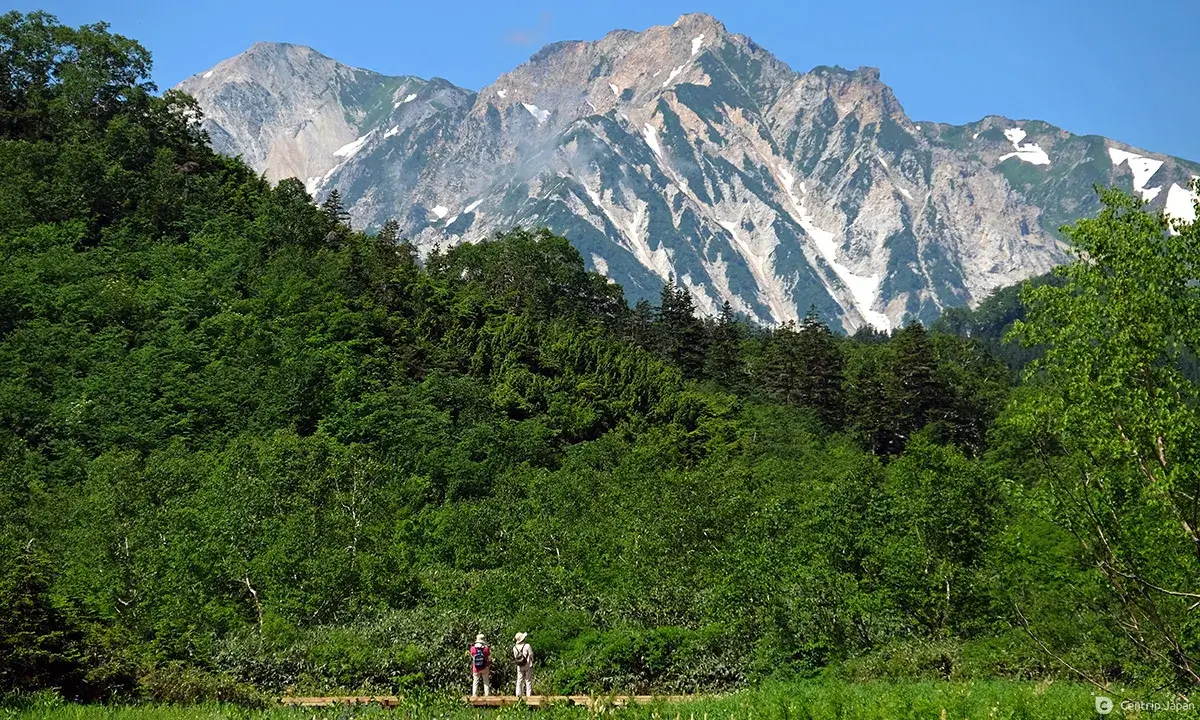 Visitors dwarfed by the rocky summits of the Northern Alps rising high above the park.
Visitors dwarfed by the rocky summits of the Northern Alps rising high above the park.
The forested park is punctuated by a handful of distinct marshlands that form a varied and unique ecosystem. It is perhaps best known for the beauty of its seasonal extremes; incredible amounts of snow in winter, an abundance of alpine flowers that add splashes of color to the lush green landscape in spring and summer, and the eruption of vibrant red, orange and yellow hues that paint the mountainside upon the arrival of fall.
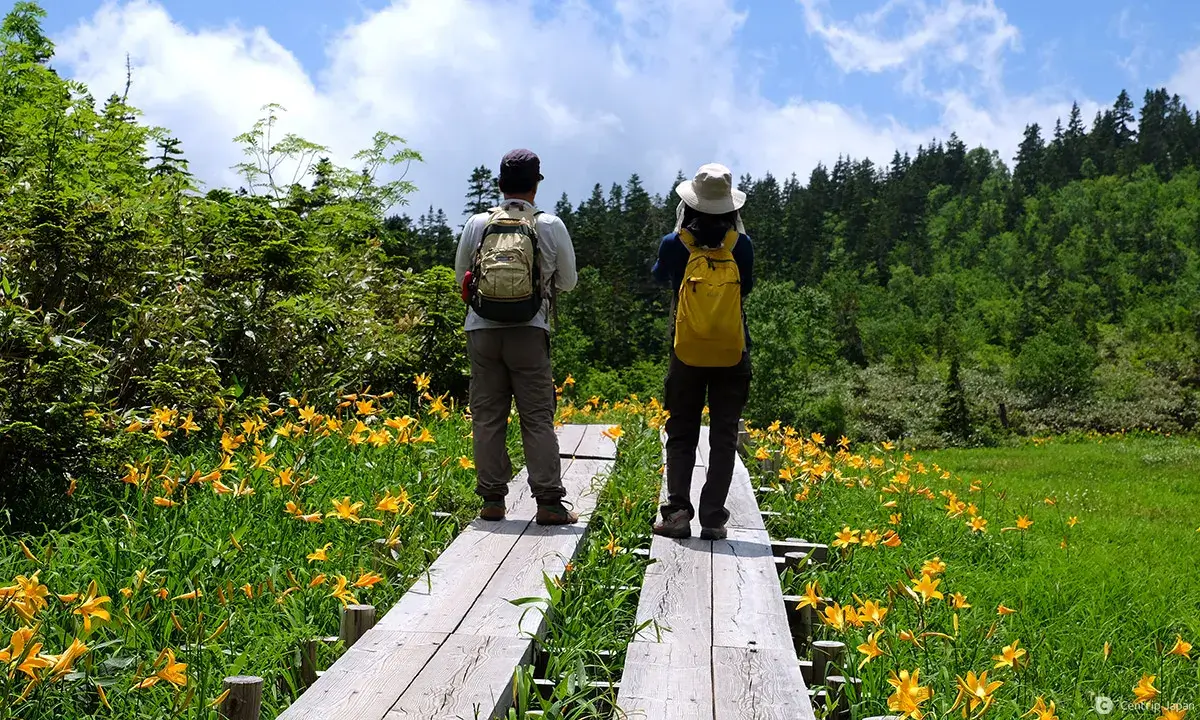 Flowers line both sides of the boardwalk where a couple stops to take photos.
Flowers line both sides of the boardwalk where a couple stops to take photos.
The nearly 3,000-meter mountains of the Ushiro-Tateyama Range that rise immediately and majestically above the park add to the outstanding scenery and provide spectacular panoramic views that give an impressive and humbling sense of scale. For these reasons and more, the Tsugaike Nature Park lives up to its nickname as "The Most Beautiful Place,” and is one of Nagano's best destinations for experiencing the beauty of Japan’s natural heritage on foot.
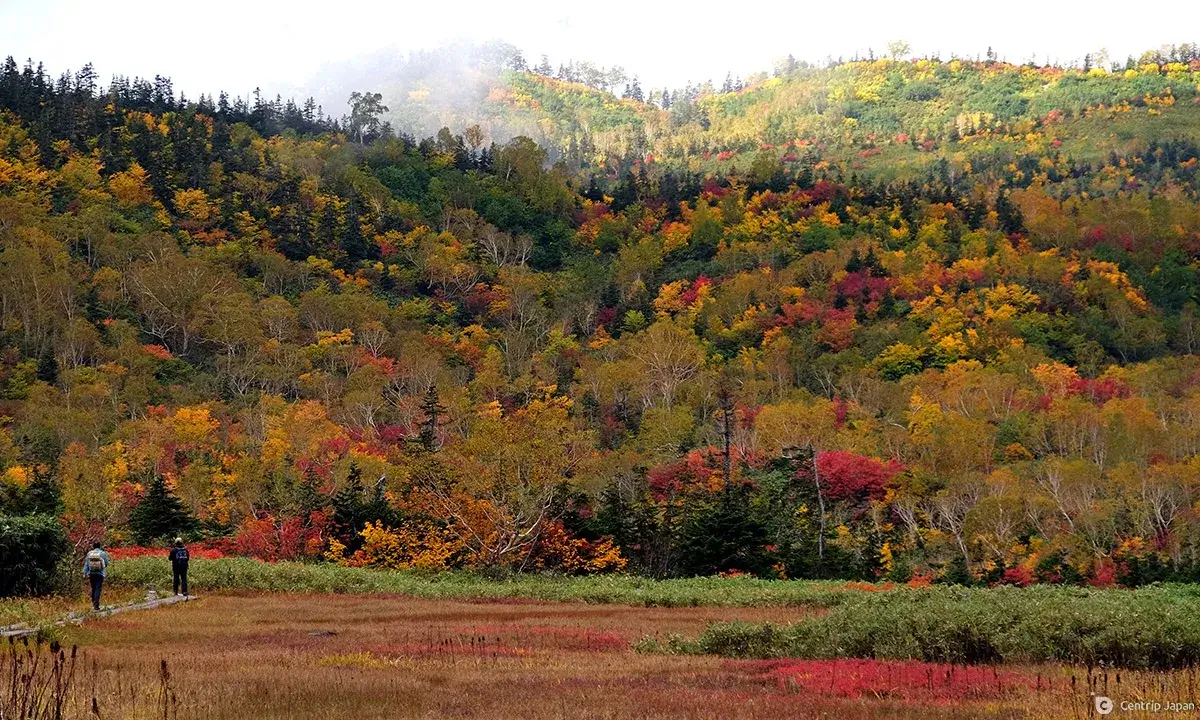 Amazing fall colors blanketing the mountainside in early October.
Amazing fall colors blanketing the mountainside in early October.
A Visit to the Tsugaike Nature Park
Highlights of the Park
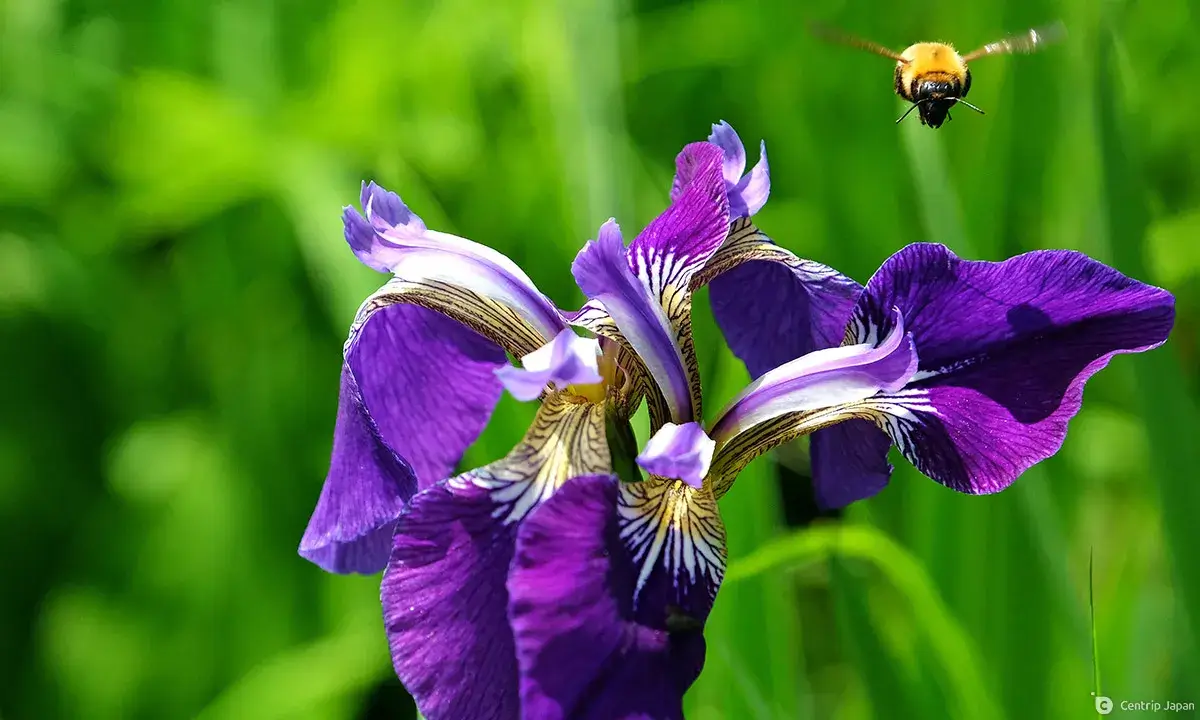 A bee hovers over the petals of a purple iris found throughout the park in July.
A bee hovers over the petals of a purple iris found throughout the park in July.
The progression of alpine plants that flower and flourish in this unique environment is beautifully synchronized with the seasons. All that grows here must be remarkably resilient to survive the harsh winter that sees accumulations of up to 6 meters of snow. Yet as temperatures warm and daylight hours are slowly extended during the spring, pools of snowmelt water provide the necessary environment to foster the growth of the first plants to emerge; Mizubasho, or Asian Skunk Cabbage.
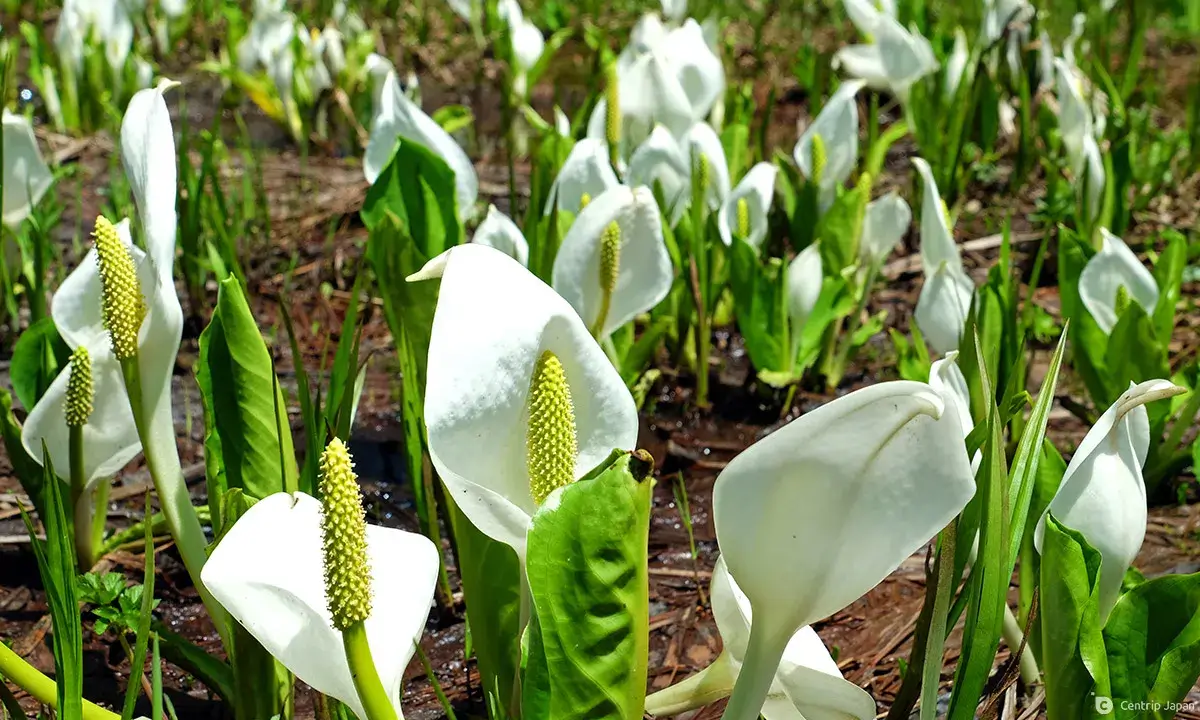 Vast fields of Mizubasho flower across the park from mid to late June.
Vast fields of Mizubasho flower across the park from mid to late June.
These vast fields of white flowering Mizubasho that peak around mid June herald the arrival of the "green" season. As the receding snows reveal more and more of the landscape, summer builds like a symphony of color, with hundreds of other alpine flora, including white cotton-grass, orange daylilies, and purple irises blooming across the expanse of the park well into July and August.
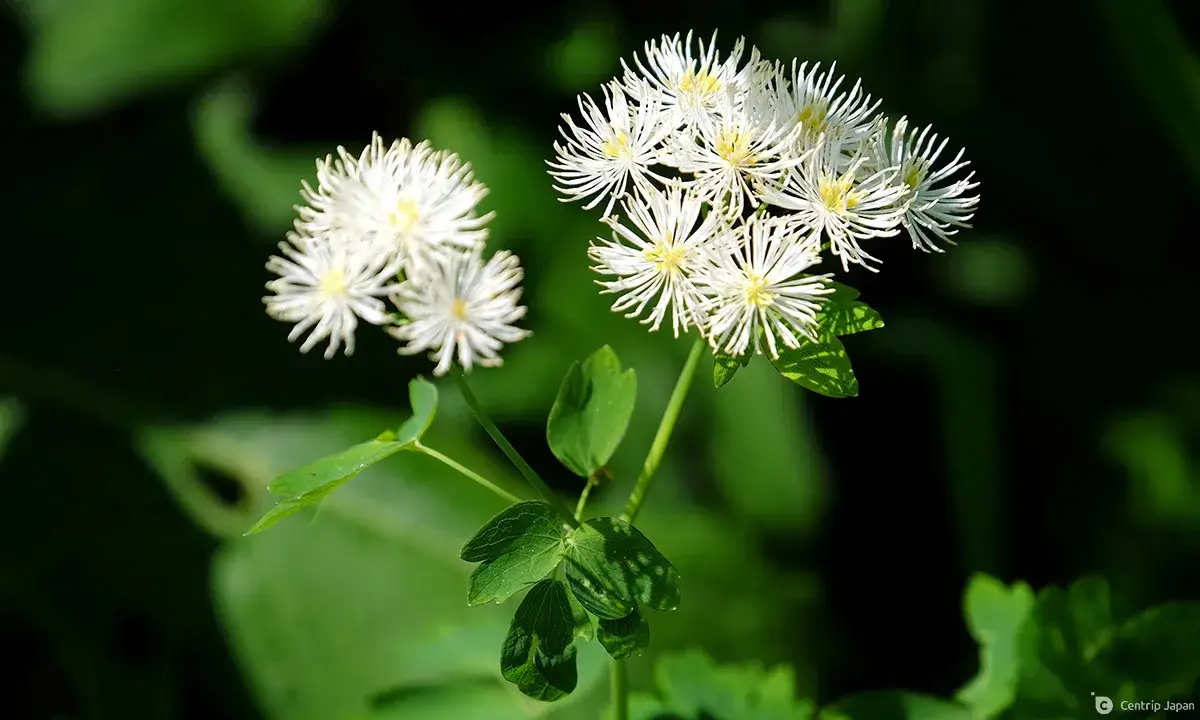 These delicate white flowers, that are said to resemble fireworks, are a common sight throughout the area.
These delicate white flowers, that are said to resemble fireworks, are a common sight throughout the area.
Owing to the elevation of the Nature Park, temperatures here average a brisk 12°C cooler than those at sea level. That makes it a wonderful place to escape the oppressive summer heat, and also means that fall arrives early, ushering in a wholesale transformation yet again. This time, vibrant hues of reds, oranges and yellows sweep across the hills and drape the once green canopy in a warm autumnal blanket. The fall foliage peaks in late September and early October, before winter exerts its dominance and the cycle begins again.
 The Nature Park is a popular destination for photographers looking to capture the brilliance of the seasons.
The Nature Park is a popular destination for photographers looking to capture the brilliance of the seasons.
Reaching the Park
 The Tsugaike Panorama Way is the only way to access the Tsugaike Nature Park.
The Tsugaike Panorama Way is the only way to access the Tsugaike Nature Park.
A trip to the Nature Park, located above the HAKUBA VALLEY Tsugaike Kogen Ski Resort, begins with the Tsugaike Panorama Way; the collective name used to refer to the combination of gondola and ropeway that is the only way to access the area. Things start with a pleasant ride on the gondola, which whisks visitors just over 4 kilometers from the Tsugaike Kogen Station, located adjacent to the large central parking lot in the middle of the village, to the Tsuga-no-mori Station at the top of the resort. The 20-minute one-way trip offers fantastic birds-eye views of the ski slopes and surrounding mountains from the cozy confines of the lofted cabin.
 The gondola on approach to the Tsuga-no-mori summit station, with the Northern Alps looming large behind.
The gondola on approach to the Tsuga-no-mori summit station, with the Northern Alps looming large behind.
After exiting the gondola it’s a short walk to the boarding point for the ropeway; the Tsuga Daimon Station. The ropeway itself spans 1.2 kilometers in length and gains an additional 285 meters of elevation over the short 5-minute ride, dropping its occupants off at the Shizen-en Station (1,829m) just below the Nature Park itself.
 Customers board the ropeway on the way to the Tsugaike Nature Park.
Customers board the ropeway on the way to the Tsugaike Nature Park.
Walking & Hiking Routes Inside the Park
 The higher elevation areas towards the back of the park offer excellent views.
The higher elevation areas towards the back of the park offer excellent views.
To enter the park you must first pass through the large, modern Visitor’s Center that stands at the entrance. The massive wood-burning stove suspended from the recycled rafters makes an immediate impression as you step inside the facility, which houses a variety of exhibits that showcase more information about the Nature Park as well as a climbing wall and other simple activities that can be enjoyed during your visit.
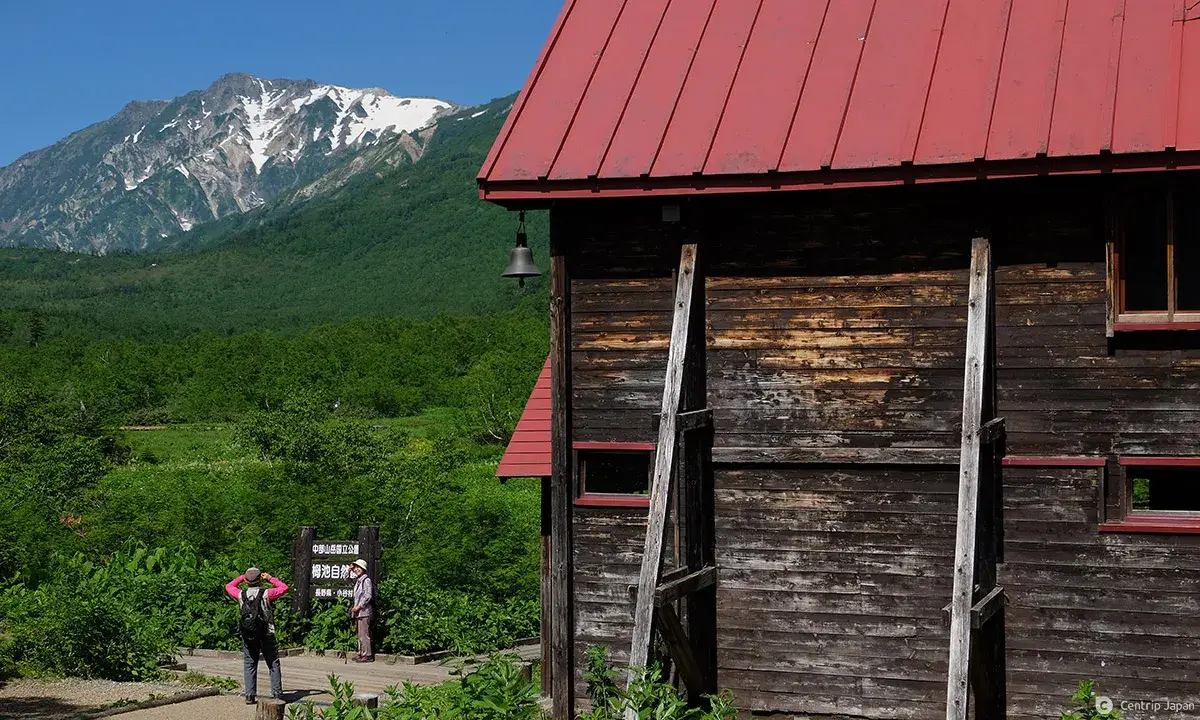 The sign designating the boundary of the Nature Park is a popular photo spot.
The sign designating the boundary of the Nature Park is a popular photo spot.
Once inside, there are a total of 5.5 kilometers of trails crisscrossing the park (80% wooden boardwalks, 20% dirt hiking trails), and it’s recommended to have a minimum of 4 hours to cover them all. Below is a list of the major options when touring the Nature Park.
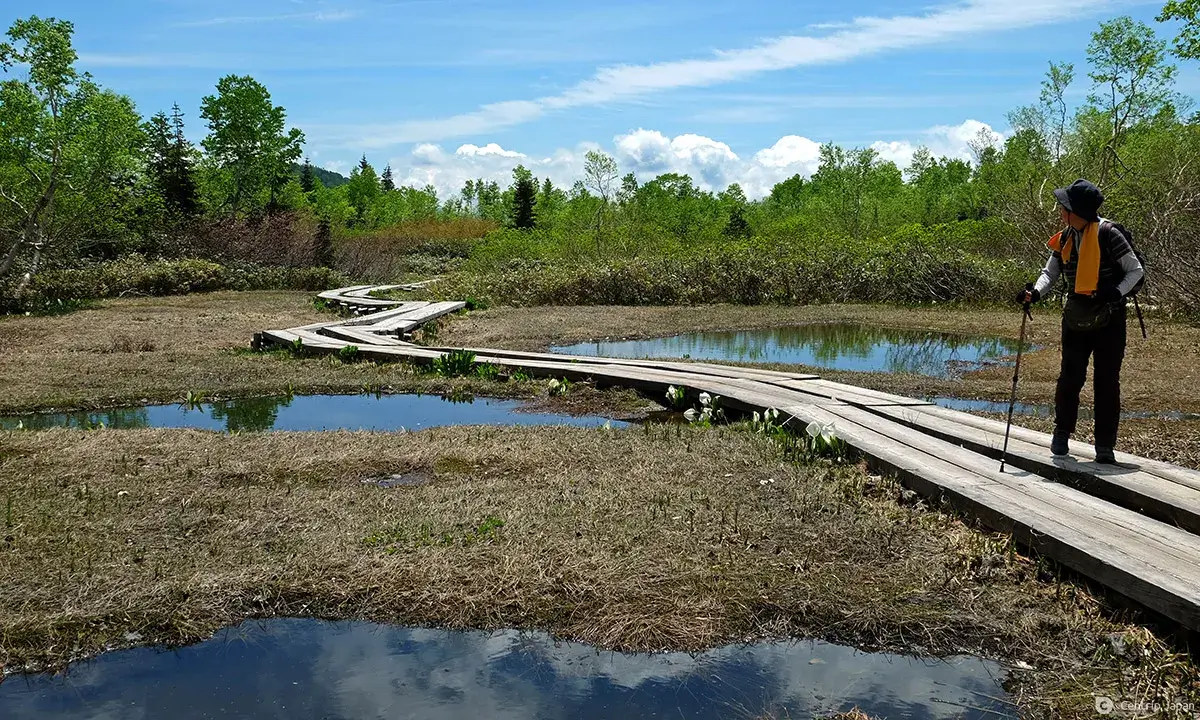 Small pools of water dot the marshlands throughout the park, reflecting the surroundings like mirrors..
Small pools of water dot the marshlands throughout the park, reflecting the surroundings like mirrors..
1km Walking Course [Park Entrance to the Mizubasho Shitsugen]
Approximately 1 hour round trip
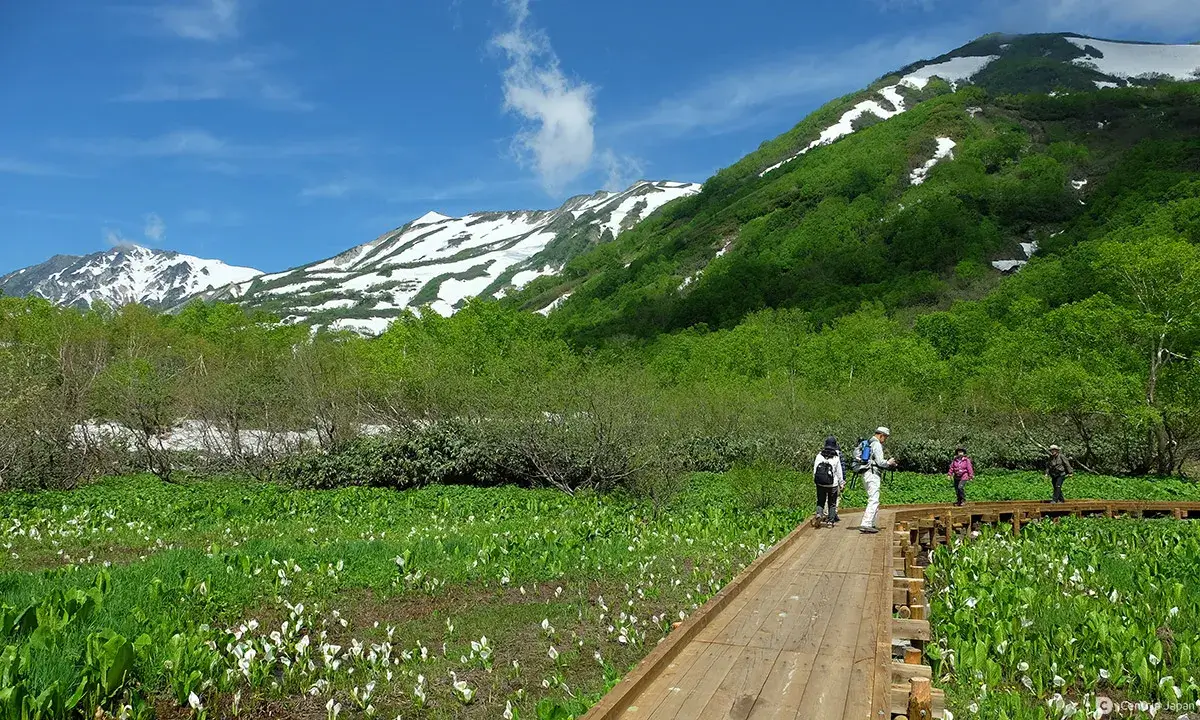 The wide and flat boardwalk encircling the Mizubasho Marsh is wheelchair accessible.
The wide and flat boardwalk encircling the Mizubasho Marsh is wheelchair accessible.
This is an easy and relaxing stroll along an elevated wooden walkway, suitable for small children and the elderly. It also happens to be the portion of the Nature Park that is barrier-free and wheelchair accessible. This route focuses on the Mizubasho Shitsugen or, "Asian Skunk Cabbage marsh", named in honor of the fields of lantern-like flowers that bloom here in huge numbers during and just after the spring snowmelt. Visitors exploring this area will have opportunities to spot a variety of alpine flora, glimpse a small type of river fish known as Japanese Char in the creek, feel the cool breeze of the highlands and be treated with panoramic views of the surrounding mountains.
 A small fish swimming in the clear waters of the Tsugaike Nature Park.
A small fish swimming in the clear waters of the Tsugaike Nature Park.
2km Walking Course [Park Entrance to the Watasuge Shitsugen]
Approximately 2 hours round trip
 Wispy cotton grass stands in delicate bunches inside the Watasuge Marsh.
Wispy cotton grass stands in delicate bunches inside the Watasuge Marsh.
The Watasuge (cotton grass) Marsh is located just beyond the Mizubasho Marsh and is characterized by its sub-alpine vegetation, with the beautiful and rare Paris Japonica (known as "Kinugasaso" in Japanese) flowering in abundance in this area.
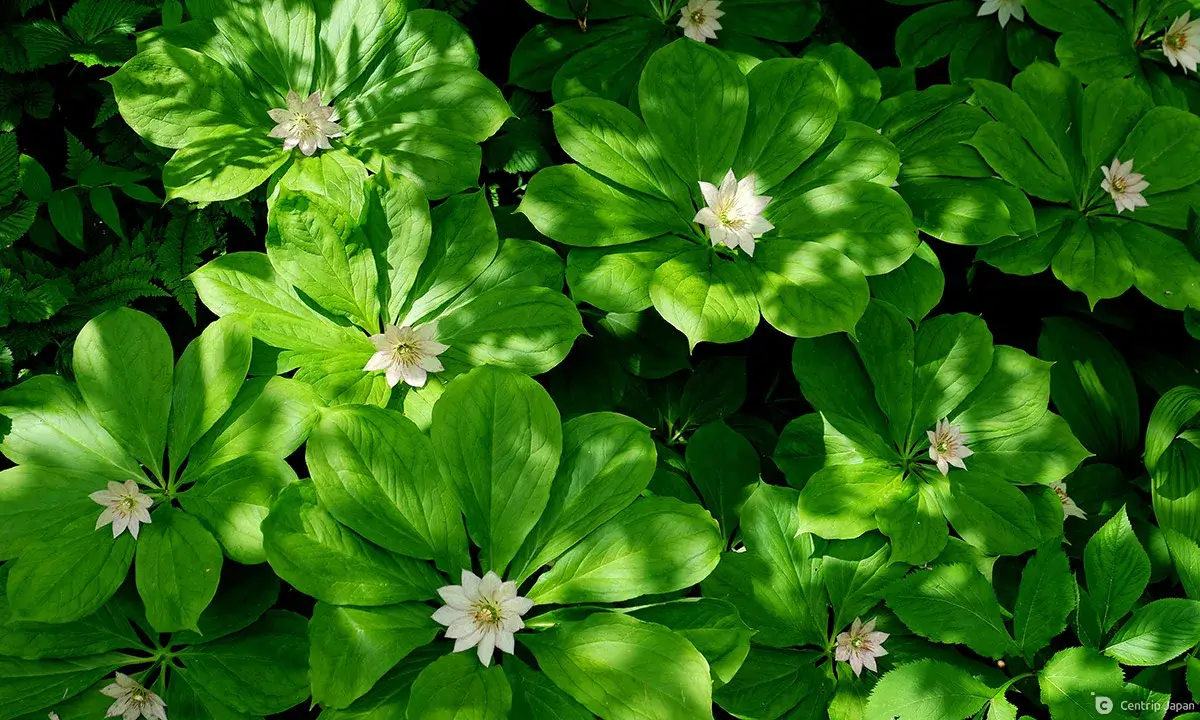 A large grouping of Paris Japonica flowers in bloom.
A large grouping of Paris Japonica flowers in bloom.
There is also a mysterious rock formation featuring a gap from which refreshingly cold air continually escapes, known as 風穴 (fuketsu). The effect is quite dramatic, and snow in the immediate surroundings lingers well into the summer as a result.
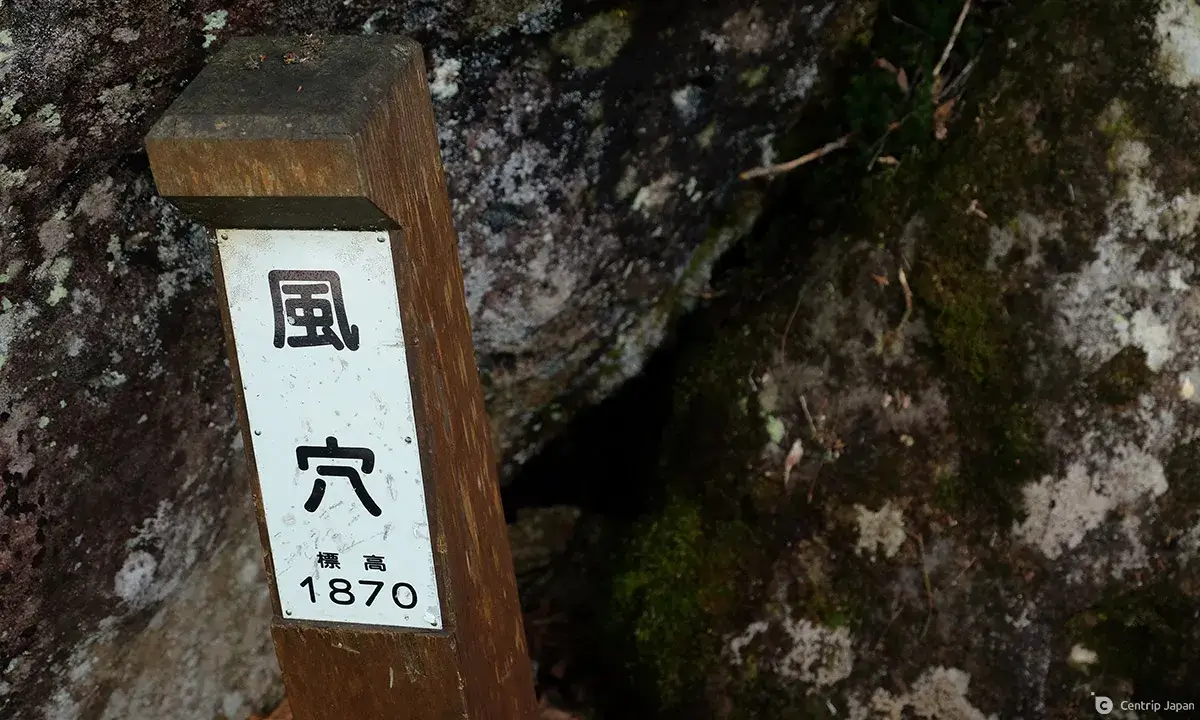 The cool air coming from the crack in the rocks is a welcome feeling on hot days.
The cool air coming from the crack in the rocks is a welcome feeling on hot days.
3km Hiking Course [Park Entrance to the Ukishima Shitsugen]
Approximately 2.5 hours round trip
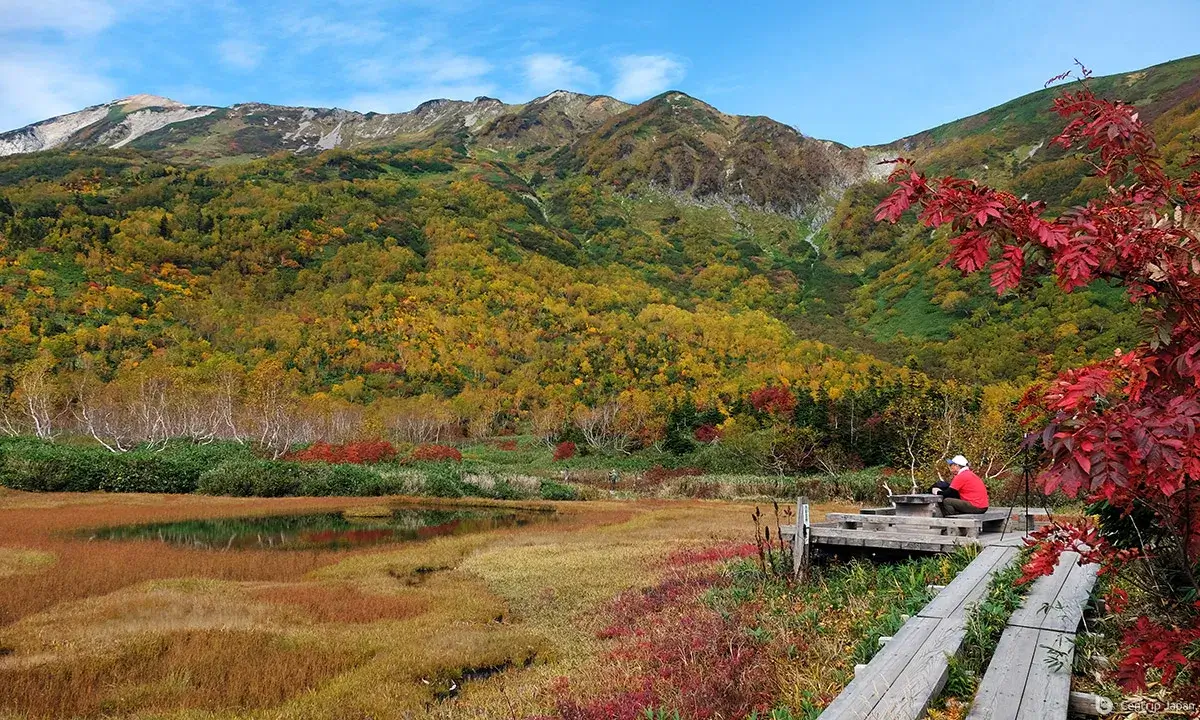 The Ukishima Marsh really stands out in the autumn when fall colors are pealking.
The Ukishima Marsh really stands out in the autumn when fall colors are pealking.
This course takes you beyond the Watasuge Marsh, and across the Kusugawa River which more or less divides the park in half. From the river the trail gradually becomes a little steeper and in spots you will leave the wooden walkway and travel on a dirt and rock trail, so it is best to come prepared with appropriate footwear when heading into the deeper recesses of the park. Daylilies dominate the landscape here in summer, while the vivid color changes of the foliage in autumn attract many visitors.
5.5km Hiking Course [Park Entrance to the Tenbo Shitsugen]
Approximately 4 hours round trip
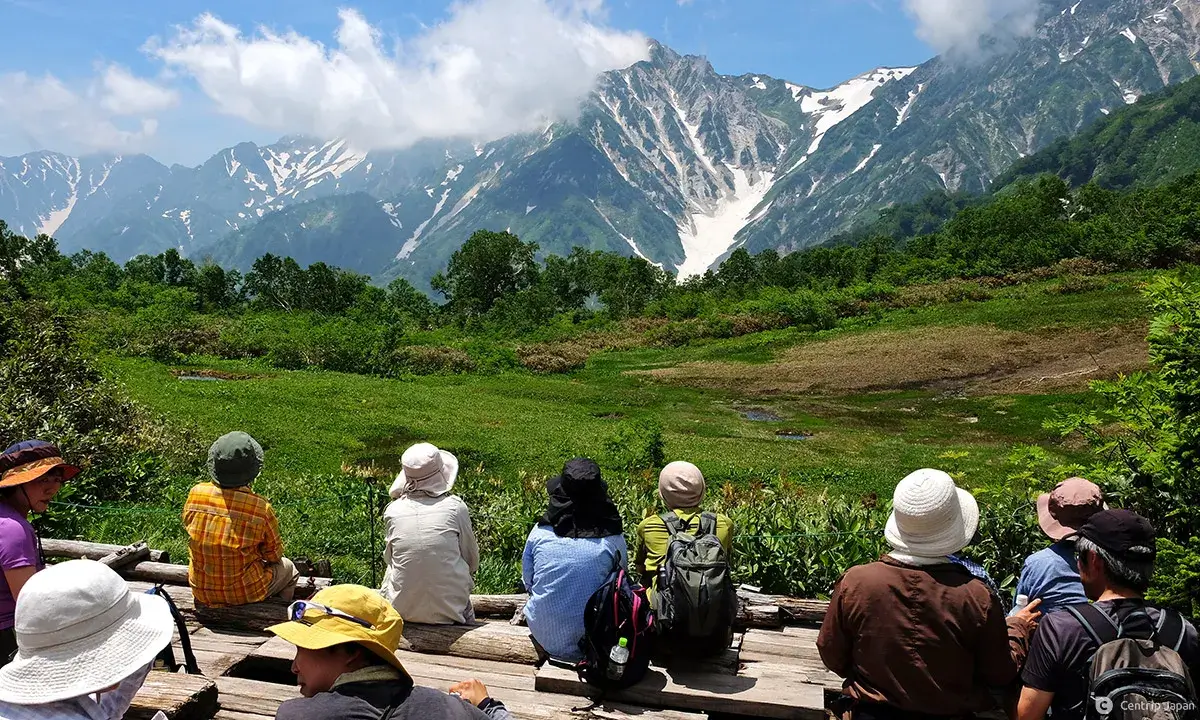 The deck in front of the Tenbo Marsh is a popular lunch spot on clear, sunny days.
The deck in front of the Tenbo Marsh is a popular lunch spot on clear, sunny days.
If you have the time and energy to wander the entire park this option gives you the grand tour. The Tenbo (observation) Marsh located at the extreme end of the Nature Park features an observation deck that offers a magnificent view of the famous Daisekkei, the large deep valley below the summit of Mt. Shirouma where snow remains year-round. Look closely and you may even be able to see climbers shuffling up the snow, as the area is a popular hiking route.
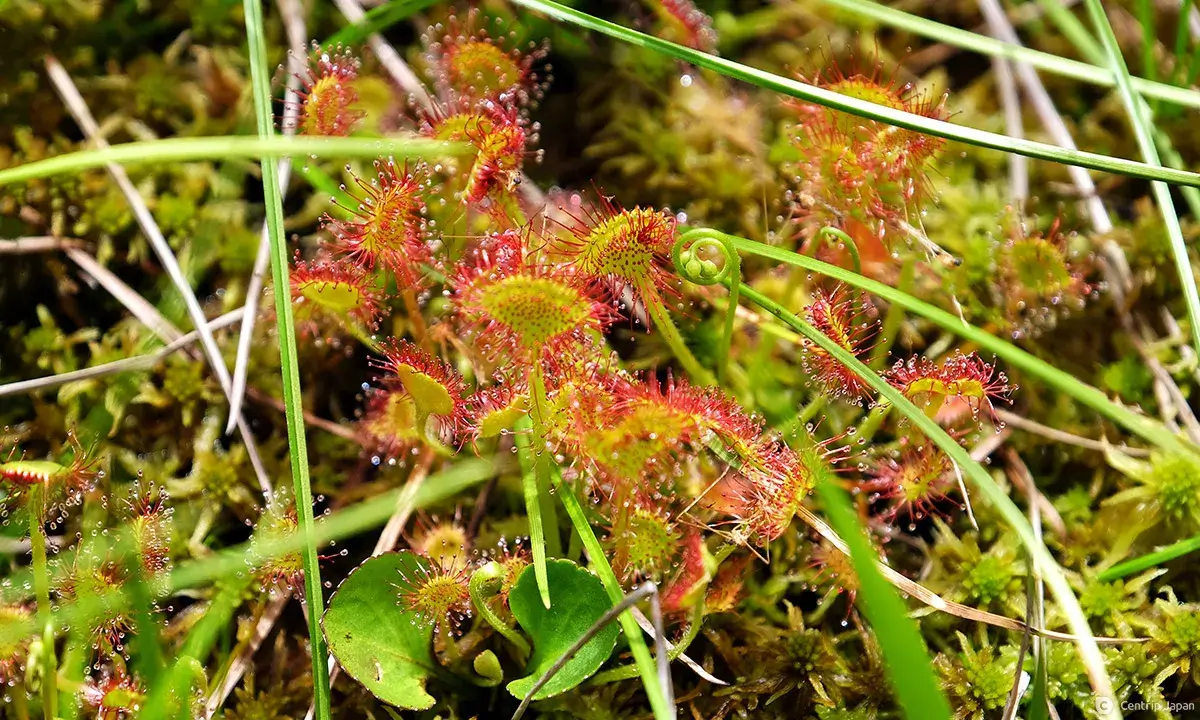 The nature park impresses on both a macro and micro scale.
The nature park impresses on both a macro and micro scale.
Several other viewpoints, the clear spring water flowing from the Ginmeisui water source, and the opportunity to observe the small carnivorous sundew plants growing near the small ponds of the Mosen-ike area are some of the additional highlights of making the full trip. A word of caution: there are no toilets or other facilities beyond those at the Kusugawa River, so you will need to be prepared.
Planning Your Visit
Getting to / from Tsugaike
Perhaps the best way to get to Tsugaike from Nagoya is via the Limited Express Shinano, a train on the JR Line that passes through Matsumoto Station on its way to Nagano. At Matsumoto Station, you will need to transfer to a local train on the Oito Line bound for Hakuba. The entire trip takes around 4 hours and costs just over ¥7,000 for a reserved seat. Some Oito Line departures will require an extra transfer between Matsumoto and Hakuba at Shinano-Omachi station. The first train departs Nagoya at 7:00 and arrives in Hakuba at 11:06.
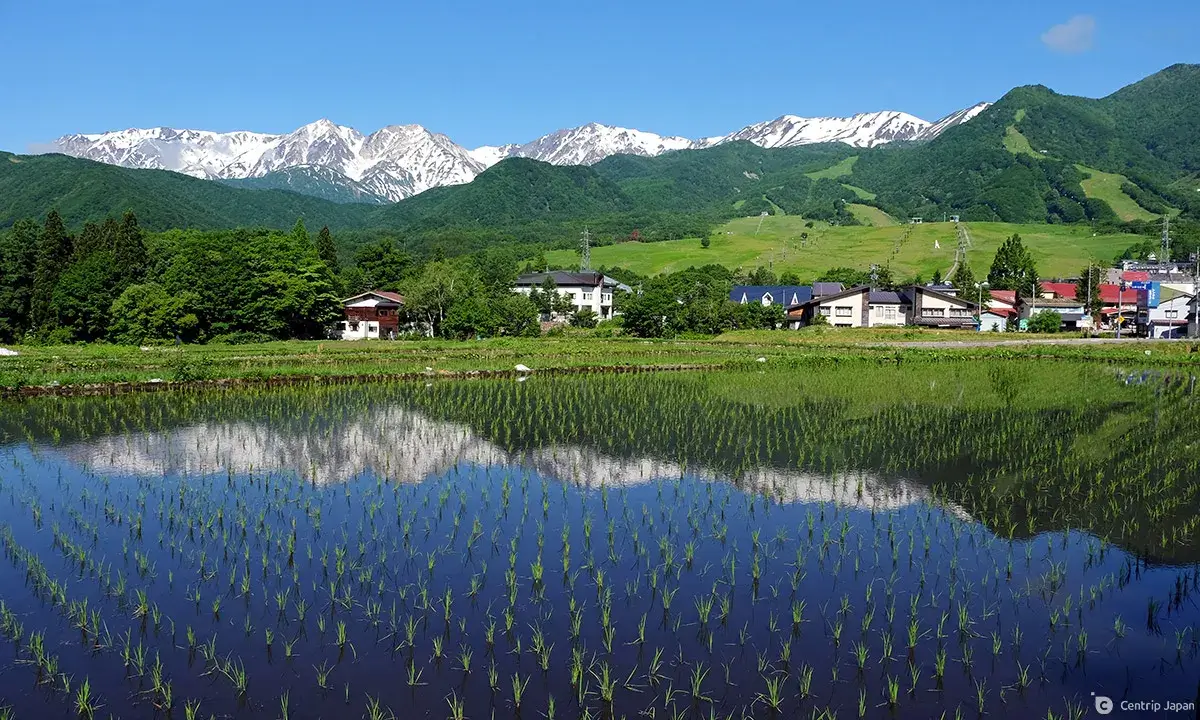 Rice fields reflect the ski slopes and ski lodges of the Tsugaike Kogen Ski Resort in June.
Rice fields reflect the ski slopes and ski lodges of the Tsugaike Kogen Ski Resort in June.
From Hakuba, ALPICO buses regularly make the 30-minute trip (¥570) between Hakuba Station and Tsugaike Kogen with up to 11 departures per day during the summer season, depending on the exact dates. If traveling on the first Limited Express Shinano and taking the 11:10 bus to Tsugaike, the earliest you would arrive is 11:37.
Due to the time required for the gondola and ropeway (up to 2 hours round trip) and the time needed to explore the Nature Park (up to 4 hours), it may be hard to do everything in a single day if you are dependent on public transportation. There are, however, plenty of options for lodging in the Hakuba and Tsugaike areas, including the Tsugaike Sanso and Tsugaike Hyutte mountain lodges which are situated immediately next to the Visitor’s Center.
Taking the Panorama Way
Tickets combining a round trip on the gondola and ropeway with the park entrance cost ¥3,700 for adults, and ¥2,100 for children and are available for purchase at the Village Tsugaike Ticket Center.
 The view from the window of the Tsugaike gondola on the way up to the Nature Park.
The view from the window of the Tsugaike gondola on the way up to the Nature Park.
The operating hours for the Panorama Way change in accordance with a predetermined schedule: The start time ranges from 6:30 to 8:00, while the last return departures occur between 16:40 to 17:20. Be sure to confirm the schedule for the day you plan to visit.
When to Go
In 2022 the Panorama Way runs from Saturday, June 11th to Sunday, October 23rd. There is no single “best time” to visit the Nature Park, but coming on a day with clear weather certainly enhances the experience. As a reminder, in general, mid to late June is a nice time to catch the tail end of the snow season and the peak of the early spring mizubasho bloom, July and August are the pinnacle for alpine flowers, and fall colors typically reach their zenith in late September / early October.
Click here to get the latest information on Central Japan.Centrip Japan - Nagoya and Chubu Information

